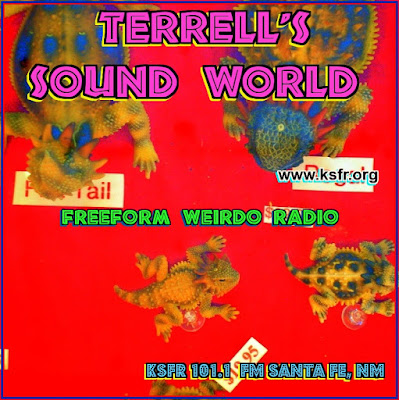April 29, 2005
Beck fans rejoice! The enchanted wizard of rhythm has returned. His new album Guero -- while not quite up to Odelay, Mellow Gold or my guilty Beck pleasure Midnight Vultures -- is a solid work of sonic wonder. And most importantly, it’s strong evidence that Beck has got over his mopiness that marred his previous album Sea Change.
Pardon my digression: I know that lots of Beck fans and lots of my fellow denizens of criticdom absolutely loved Sea Change, Beck’s 2002 musical account of the demise of a love relationship. I forget which gushing rock scribe compared this self-pitying mess with Hank Williams.
Blasphemer! Thou shalt not take Hank’s name in vain!
Don’t get me wrong. A break-up is indeed legitimate ground to plough for songwriters. Think Bob Dylan’s Blood on the Tracks or Tom Russell’s Borderland or Marvin Gaye‘s Here My Dear.
Beck’s morose little song cycle might have showed another side of the crazy kitchen-sink sonic trickster we loved, but the music came nowhere near these classic break-up records. It didn’t even match his own Mutations, a previous album of slower, more somber tunes.
Maybe I’m oppressing the artist. But when listen to Beck, I don’t want some sensitive troubadour, I want magic and hipster insanity.
But, back to the present:
With Guero (hey gringo, it’s pronounced “whetto” and it means “blondie.”) Beck sounds like he’s having fun again. It’s a return to Beck’s freewheeling, funky, clunky sound, mixing hip-hop, blues, porno-soundtrack rock and any other sound that isn’t nailed down. With his old pals The Dust Brothers producing, Beck sounds like he’s ready to go back to Houston and do that hotdog dance.
It starts off with a nasty, fuzzy guitar and heavy-handed drums on “E-Pro,” quieting down for Beck to sing the verses. And it sounds like he means business:
“See me comin’/to town with my soul/straight down of the world with my fingers/holding onto the devil I know all my trouble’s hang/on your trigger.”
A galaxy of sonic delights follows.
“Que Onda Guero” is pure Beckian fun. With Dust Brothers scratching and taunting Spanish voices in the background, Beck takes a picture of a gringo lost in the barrio. "Andelay joto, your popsicle’s melting …”
“Go it Alone” is a collaboration with The White Stripes’ Jack White. It’s a slinky bluesy number with a downright hairy guitar that keeps threatening to erupt. It might have been cool if Beck had shared vocals with White, who just plays bass here. But it sounds pretty cool as is.
“Farewell Ride” is a sweet nod to Beck’s folk roots -- a nasty slide guitar and harmonica over robo chain-gang percussion, with lyrics lifted from Blind Lemon Jefferson’s “One Kind Favor” (“Two white horses in a line/Two white horses in a line …”)
“Missing” has a bosa nova sound, while the chorus and distorted guitar sound on “Earthquake Weather” sounds like a postcard to Steely Dan.
Beck is at his Beckiest on “Rental Car” Some truly obnoxious guitar interplays with what sounds a harpsichord. In the middle a near metal jam is interrupted by Petra Hayden sounding like she’s auditioning for The Swingle Singers, chirping “La la la la La … ” You can almost see the interlude from some ‘60s movie with some groovy couple rolling in the daisies. Till Beck’s rasty guitar comes back.
It’s a good think that nasty guitar is back. And the silly samples and the crunchy percussion and the psychedelic joy-boy lyrics … Welcome back, Beck.
{Note: I snapped the photo of Beck, above, at Lollapaloza in Denver, 1995.}
Also Recommended:
The Lighthouse by Ana da Silva. I would bet that most of the fans of The Raincoats in this country came to them through the late Kurt Cobain, a devoted fan who talked them up in interviews.
For the uninitiated, The Raincoats was a British female punk band led by da Silva and Gina Birch. They disbanded in 1984, but, after Cobain-related publicity, reunited, toured with Nirvana in England and made a pretty fine comeback album called Looking in the Shadows -- before slipping back to the shadows again.
Now, a decade later, da Silva has resurfaced with this album. The Lighthouse is largely a self-made affair with da Silva as a virtual one-woman electronic band, playing keyboards, some guitar and singing.
The voice -- sweet, silky and extremely British -- is the main draw, thought the instrumental “Hospital Window” is gorgeous.
There are few overt traces of punk left here. The melodies are pretty and the music restrained.
There’s a little hint of menace in “In Awe of a Painting” where the shaky-handed singer is spilling coffee as she gazes at a lover. She sounds like the queen of electro-Wonderland in “Disco Ball” and like a less crazy Nina Hagen in “Two Windows Over the Wings.”
Then there’s “Modinha” a song written by Brazilian master Antonio Carlos Jobim that has echoes of Bjork and -- not as obviously -- Marianne Faithful.
I hope it doesn’t take another decade for da Silva to bless us with more music.




No comments:
Post a Comment
Note: Only a member of this blog may post a comment.